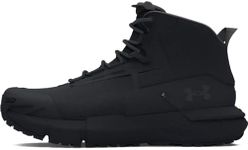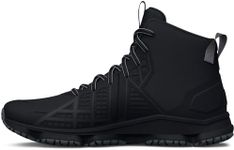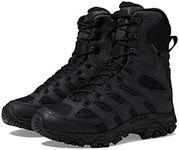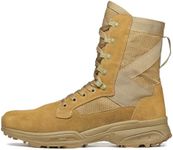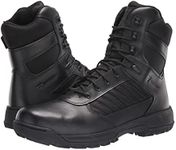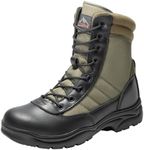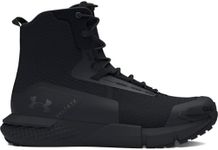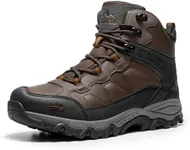Buying Guide for the Best Tactical Boots
When choosing tactical boots, it's important to consider the specific needs and conditions in which you'll be using them. Tactical boots are designed for durability, comfort, and protection, making them ideal for military, law enforcement, and outdoor activities. To find the best fit for you, focus on key specifications that will impact your performance and comfort. Here are some essential specs to consider when selecting tactical boots.MaterialThe material of tactical boots is crucial for durability, comfort, and protection. Common materials include leather, nylon, and synthetic blends. Leather is known for its durability and water resistance, making it suitable for rugged terrains and wet conditions. Nylon and synthetic materials are lighter and more breathable, ideal for hot climates and long periods of wear. Choose leather for heavy-duty use and synthetic materials for lighter, more breathable options.
WaterproofingWaterproofing is essential if you expect to encounter wet conditions. Waterproof boots are designed to keep your feet dry, which is important for comfort and preventing blisters or infections. Look for boots with waterproof membranes like Gore-Tex or other proprietary technologies. If you will be in dry environments, you might prioritize breathability over waterproofing.
Sole TypeThe sole type affects traction, stability, and comfort. Rubber soles are common for their durability and slip resistance, making them suitable for various terrains. Some boots have specialized soles for specific environments, such as oil-resistant or puncture-resistant soles. Consider the terrain you'll be navigating and choose a sole that provides the necessary grip and protection.
WeightThe weight of the boots can impact your mobility and fatigue levels. Heavier boots offer more protection and durability but can be tiring over long periods. Lighter boots are more comfortable for extended wear and quick movements but may sacrifice some durability. Assess your need for protection versus mobility to determine the right weight for your boots.
Fit and ComfortFit and comfort are paramount for preventing blisters and ensuring you can wear the boots for extended periods. Look for boots with ample cushioning, arch support, and a snug fit without being too tight. Consider trying on boots with the socks you plan to wear and walking around to ensure they are comfortable. Proper fit is essential for performance and preventing foot injuries.
HeightThe height of tactical boots can vary, typically ranging from 6 to 10 inches. Higher boots offer more ankle support and protection, which is beneficial in rough terrains or for heavy-duty use. Lower boots provide more flexibility and are lighter, making them suitable for less demanding environments. Choose the height based on the level of support and protection you need.
BreathabilityBreathability is important for keeping your feet cool and dry, especially in hot climates or during intense activities. Boots with breathable materials and ventilation features help prevent overheating and moisture buildup. If you will be in hot or humid conditions, prioritize boots with good breathability to maintain comfort.
